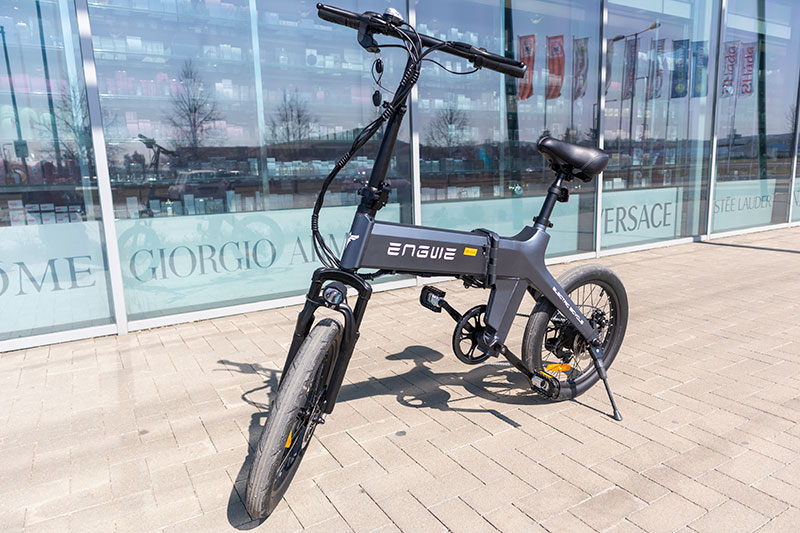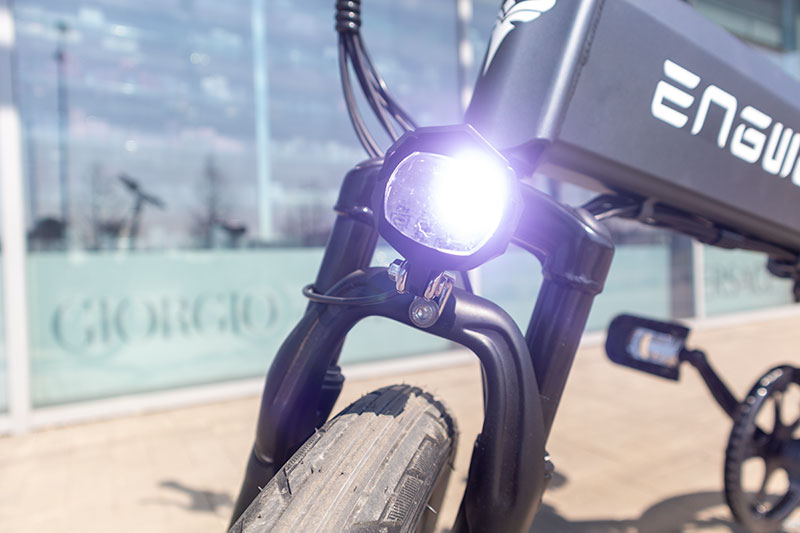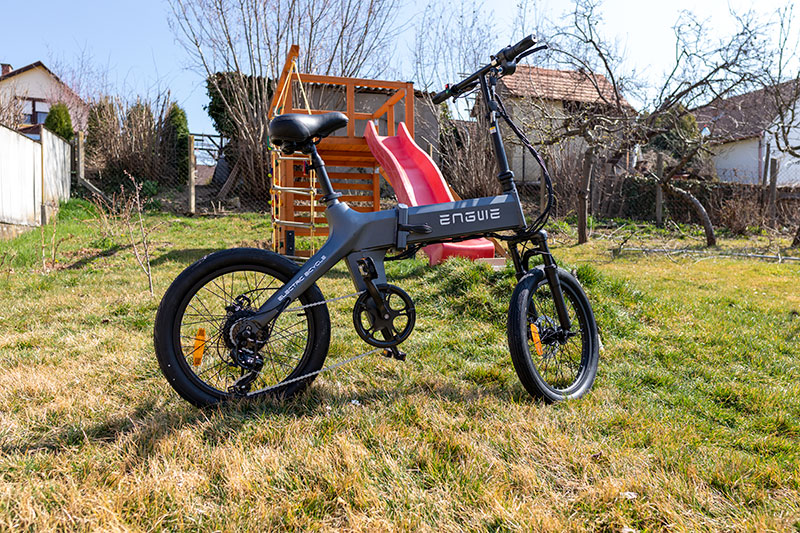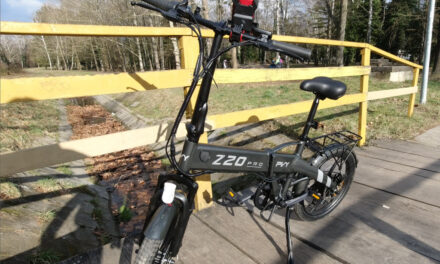
Bye bye gas bill! - ENGWE C20 e-bike test
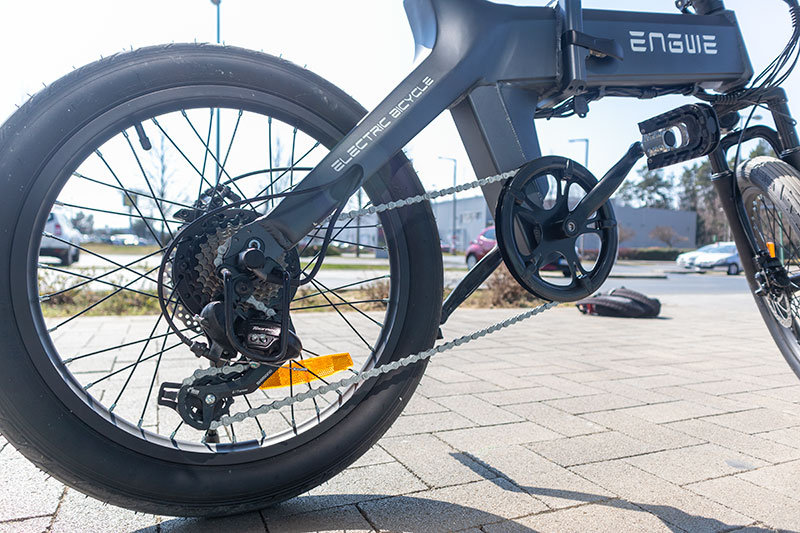
They try to seduce us with cool looks, long range and low price.

contents show
Check out our video test too!
Introductory
In recent weeks and months, there has been more and more talk about rising fuel prices and even shortages. Along with the proliferation of news that is of little cause for optimism, a growing interest in alternative, electric vehicles has become apparent.
It would be an exaggeration to say that this is surprising, as the price of fuel up to 700+ forints per liter floats above our heads like the sword of Damocles. Anyone who can do it will try to find a way out, a cheaper way to get to the store to shop or work.
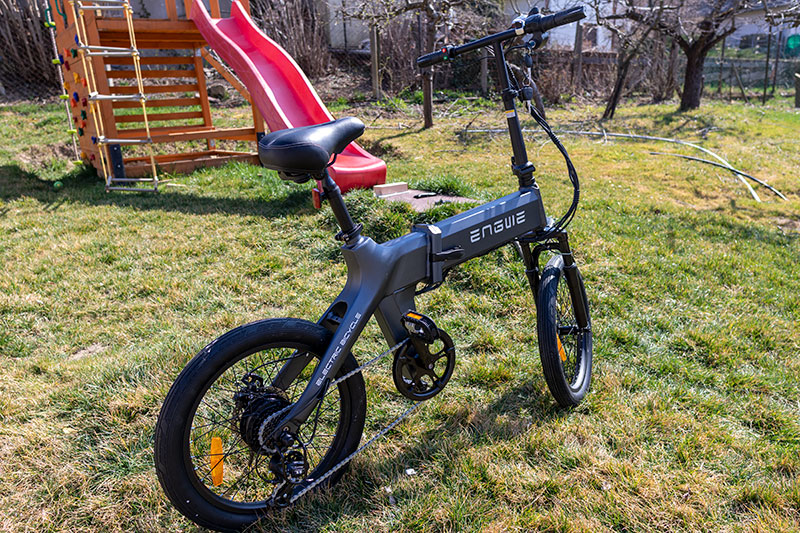
It was only because of this news that I was happy when he was approached by a manufacturer to write about a new electric bike. I nodded happily at the request, especially after looking at the pictures, running through the factory data.
So today’s article is about a very new, almost still warm bike that came out of ENGWE’s workshop. All I knew about ENGWE as a manufacturer was that it had interesting products. Compared to average ebikes, they always give you a little plus, either a better damping or a cool polish not seen elsewhere.
The C20 is like that, it catches your eye right away, but it tries to convince us not only with its looks, but also with its capabilities and prices.
Packing, assembly
I write the article in the usual way, that is, we start with the packaging and assembly. Then it can come from the outside, the paper form is finally the actual experience.
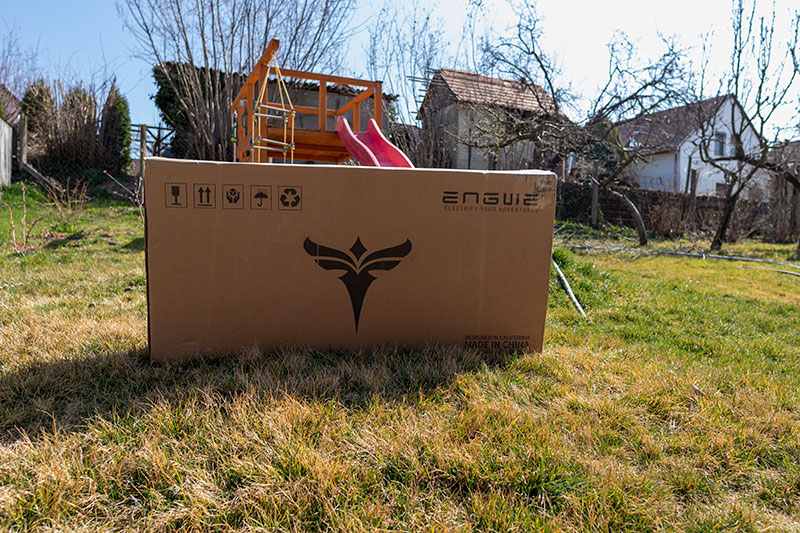
The ENGWE C20 comes in a surprisingly large box. The turbidity is immediately revealed when the cardboard is unfolded. Similar bikes are always folded into the box, but the C20 is not, only the front wheel has been removed for transport.
We will find everything packed separately in the box with due care. Also the front wheel, the front wheel axle, the seat, the steering column and the steering wheel itself. These will need to be screwed together in a nice row.
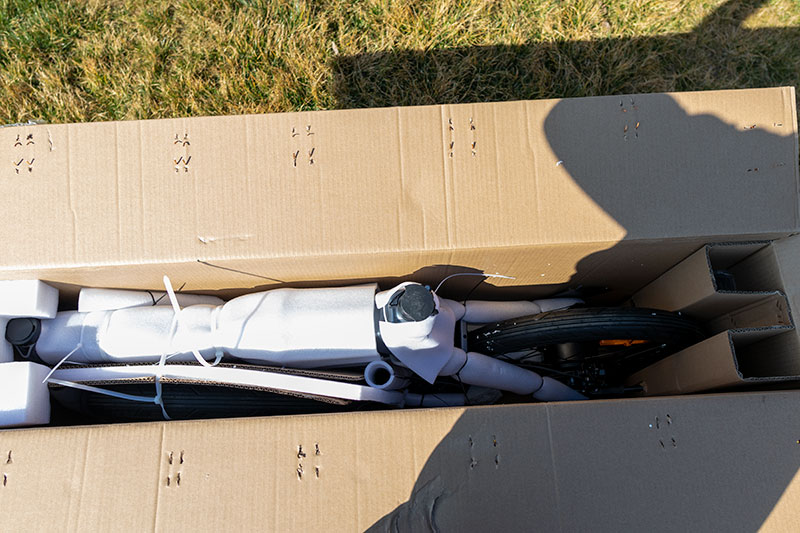
Installation is not complicated now either. I was the first to replace the government. Here you need to make sure that the tiller is tilted forward, not backwards, so it will be screwed in place correctly.
The seat could be fitted second, here the seat post should be put in place. Do not remove the bag protecting the seat yet, as it will be worth turning the bike now!
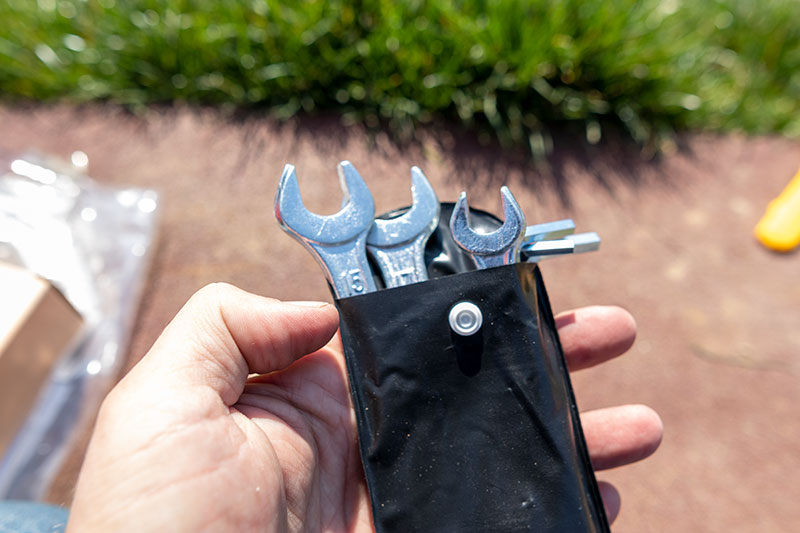
Once set on your head, you can install the front wheel and screw on the pedals. On the front wheel, in my case, the brake pads seemed a little tight, but after roughly 10 feet of biking, the pads were in the right position. So don't worry about it!
In terms of assembly, it is important that a good set of small tools is included with the bike. The package isn't too big, if you buy a small bag for your new bike, you can take the tools with you!
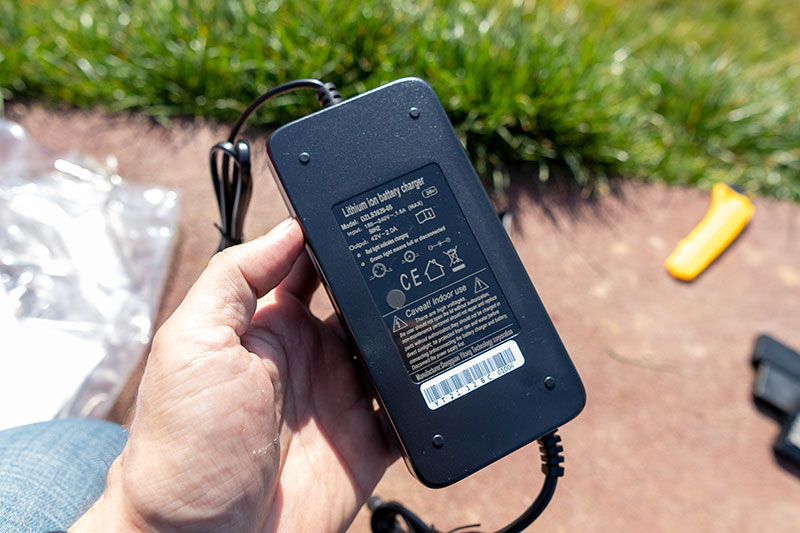
When everything has come together, the usual things can come. Be nice to be patient, not jump on the new line right away. The brakes must be checked or adjusted afterwards. Adjust the lamp, test the transmission, inflate the wheel. If all is well, you can come for a test drive!
External
The ENGWE C20 has become very showy, standing out from the average electric bike. Although the construction is the usual one, ie the folding frame, the battery in it is no longer unusual for the eye, but the shape of the chassis is quite disorderly.
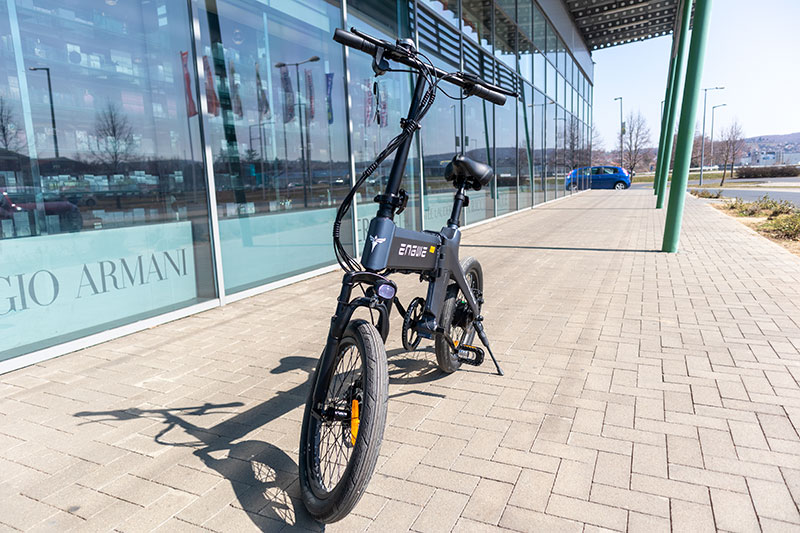
Of course, take disorder as a positive. It is quite simply that the frame was carved until a sporty yet almost elegant form was brought together. The extension of the rear fork and the pedal also became completely different than usual.
In terms of design, the ENGWE C20 also competes loosely with a Xiaomi, if only because the cables are routed in the frame here and there.
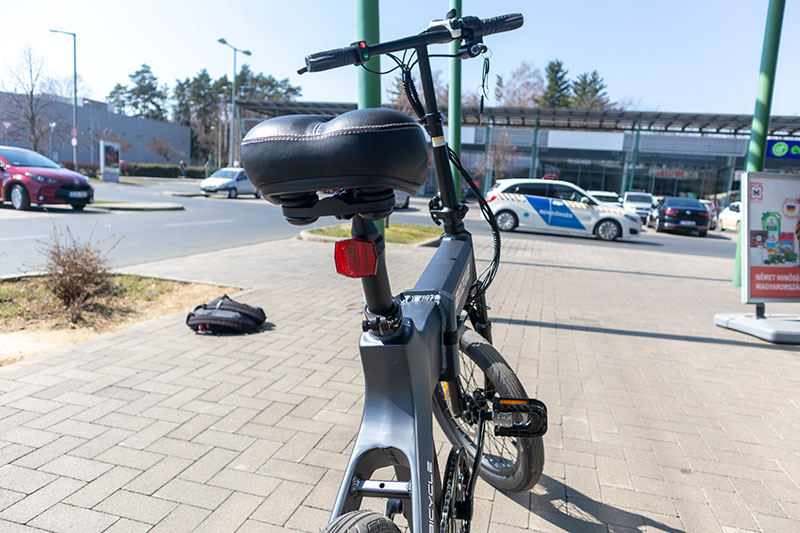
Anyway, the design has a good effect not only on our eyes, but also on the weight of the bike. In contrast to similar structures around 30 kilos, the C20 weighs only 24 kilos, which is a serious weight loss.
The height of the handlebars and of course the seat is also adjustable, plus there are quite a wide range. The seat is large, cushioned, comfortable.
The exterior also includes dimensions. The wheel size is the usual 20-inch, not thick tire, but a solution for an asphalt. The frame can be folded. When open, the length is 160 centimeters and the maximum height is 130 centimeters, while when folded, it is 100 centimeters long and 77 centimeters high. In other words, we can put it in the trunk of a car quite easily.
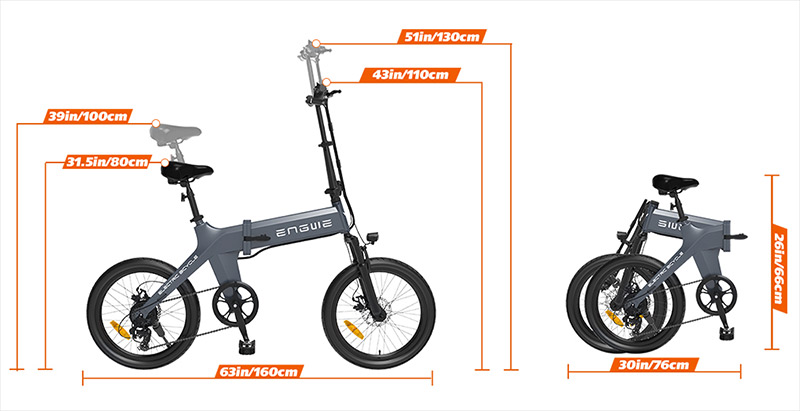
Before I forget, the pedals can also be folded up so they can be laid down in the boot.
We don’t get fenders or other accessories with the ENGWE C20, but the good news is that the mounting points are in the standard locations. In other words, we can buy fenders, luggage and a lot of other things cheaply, even at home. Even a mirror, because the threaded holes for fixing the mirror can be found on the steering wheel.
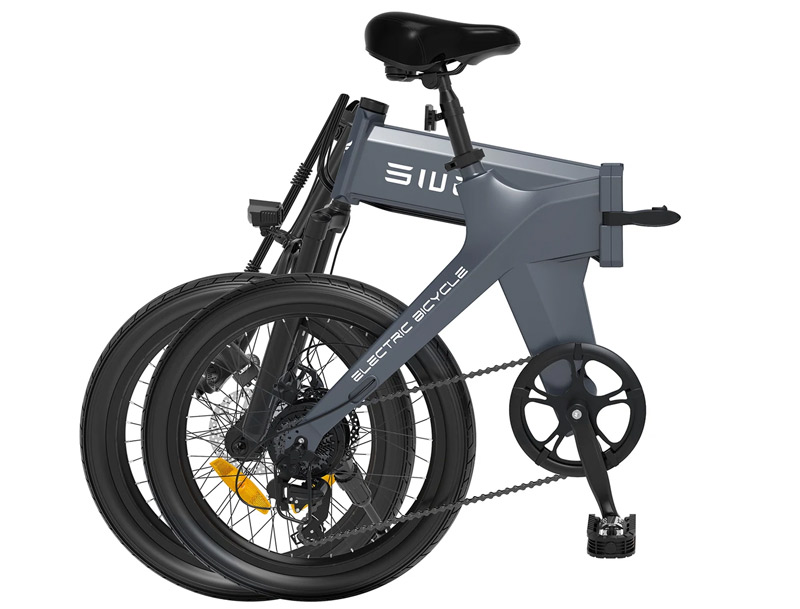
Paper form
Let's see the factory parameters very briefly! The ENGWE C20 doesn't seem very interesting when it comes to the driveline, at least on paper. In essence, we get the usual 36-volt, 10,4 Ah system. The motor is 250 watts, so that's the standard.
According to factory data, the overcoming ascent is 20 degrees, the maximum speed that can be reached while the auxiliary is helping 25 kilometers per hour.
However, there are three very important pieces of data here that make the C20 stand out. One is that the range (with pedal assistance) is 80 kilometers, the other is that the maximum load capacity is 100 kilograms here, compared to the usual 120-150 kilograms, and the third is that the bike has been given a 2 Ah fast charge. The latter allows us to fully charge the battery in 6 hours.
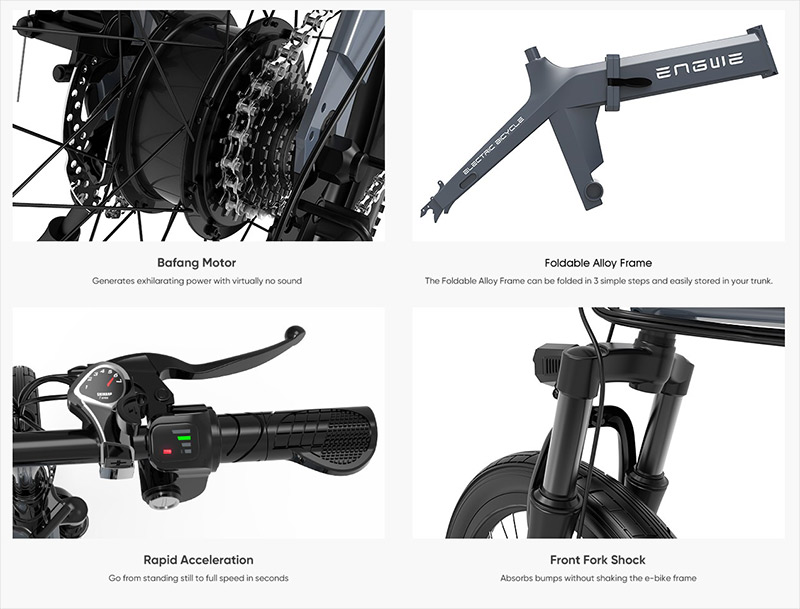
In other words, the manufacturer says that due to the new frame structure and presumably lower self-weight, even more full-bodied people can use it!
What else?
Of course, we have front and rear disc brakes with 160mm discs, still mechanical in this price range. We have a front telescope and a Shimano Tourney transmission that is seven-speed (14-28T), meaning we have 7 different sized sprockets on the rear wheel.
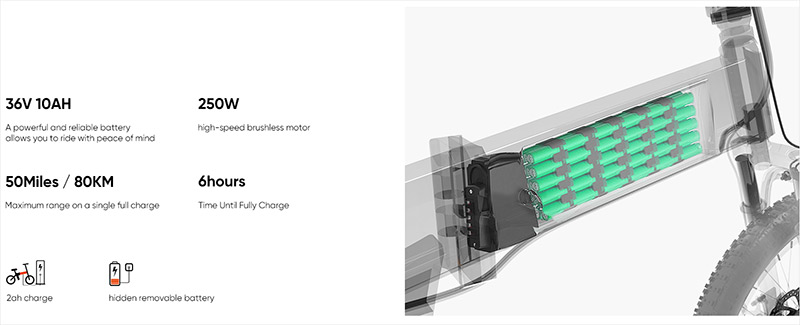
There is a headlight in the package, in which the bagpipe is built in anyway. However, there is no rear light, this is also common on these bikes, only one cat's eye is mounted under the saddle.
It is also important that the C20 did not receive an on-board computer, so for example we cannot set gears for assistance, we do not see our current speed, distance traveled and the like. The only important data we have is the battery charge.
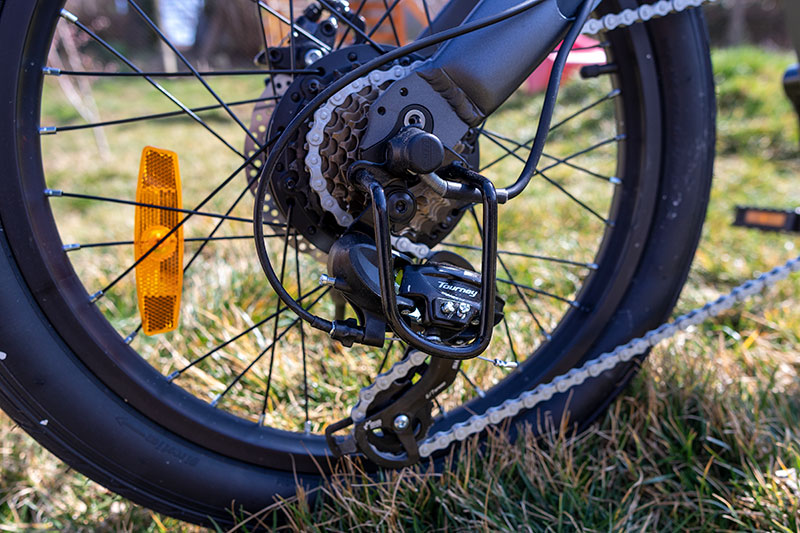
That's the paper form, that may be the point, so what a bike is like in practice!
Experiences
I had a little over a week to try. During this time, I also tried it on lighter forest terrain, but I used it mostly on city, asphalt or paving stone, as this is the primary habitat for ENGWE C20.
It’s been clear so far that the C20 isn’t a special bike, but it has some capabilities that are worth highlighting.
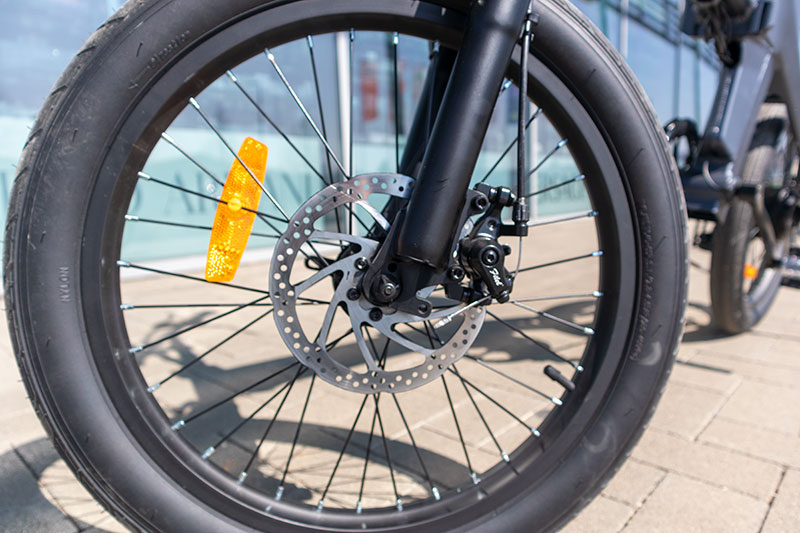
As I wrote the maximum distance that can be covered on an embankment is 80 kilometers. Honestly, I didn’t measure how many miles I covered during the test, but since this isn’t my first bike test, and the route of the test doesn’t change much, I have a basis for comparison.
According to this, the ENGWE C20 consumes extremely little.
I charged the battery only once at the start of the test, I haven’t had to plug in the charger since, and the battery indicator shows that the battery is half full. I used to charge my own bike by then, but in the case of the C20 it is still unnecessary.
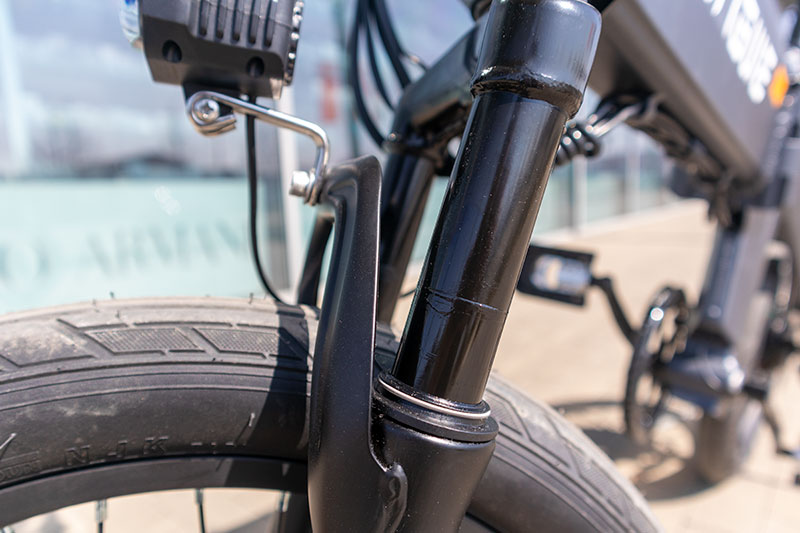
I also wrote up about fast charging, but I couldn’t really try this as I indicated. As a matter of fact, the charger isn’t the usual piece, it has active cooling, so presumably it does have some quick charging feature.
I mentioned the height adjustment of the handlebars above. Not the fact itself is interesting, as this can be adjusted on most bikes, but rather the degree of adjustability that is eye-catching.
According to factory data, anyone with a body height between 155 and 210 centimeters can use the C20, which may be true. But with my 184-inch height, the steering wheel can be adjusted in two ways. When I lower it, I have a particularly athletic, almost wildly stimulating posture, I often jumped off the sidewalks while standing on the pedal, and I bounced wildly here and there on the dirt road in the woods.
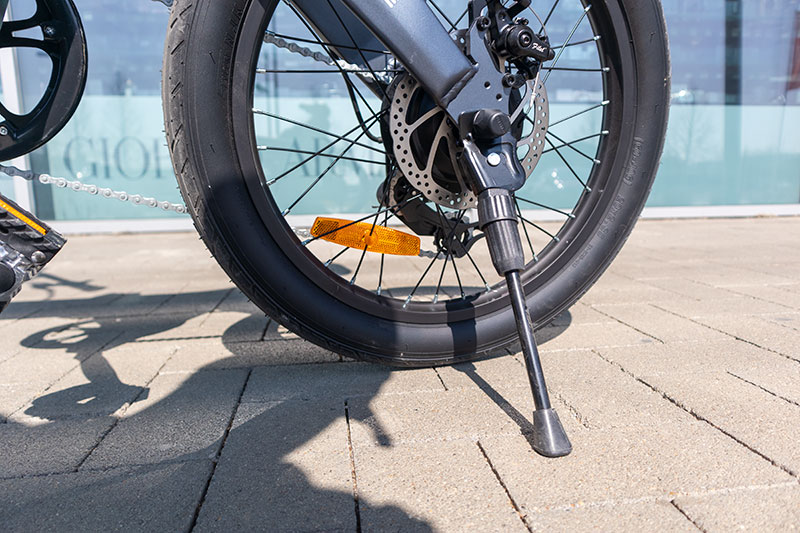
If, on the other hand, I lift the handlebars into a very comfortable and, above all, calm posture, which has come in very handy in urban transport.
So the ENGWE C20 is a multi-purpose bike, I dare recommend it for almost sports purposes, but it's also great for city commuting!
There is another interesting thing about the use. To put it mildly, an interesting solution is that you need two keys to use the bike. Usually at the bottom of the frame, at the battery, we usually find a keyhole that allows us to close the axle. Not only physically, but also electrically. So on the one hand, we need to use it if we want to take the battery to the home to charge it, and even if we just want to start the bike smoothly (I mean with one of the electric modes).
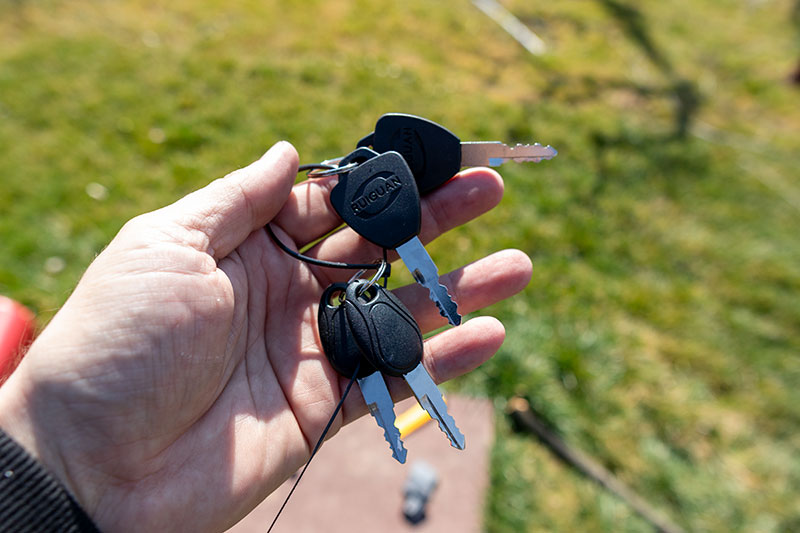
However, the ENGWE C20 also has a second key, a “key”, which must be placed in the “ignition switch” on the steering wheel. We also need to turn this around for the electrical system to turn on.
I think security is never unnecessary, but that’s a little too much. The C20 is a bike that, if not locked with a chain or U-padlock, can be ridden smoothly without electrical assistance. Maybe the protection against battery theft is still okay, but the key solution on the steering wheel will scare away very amateur thieves at most.
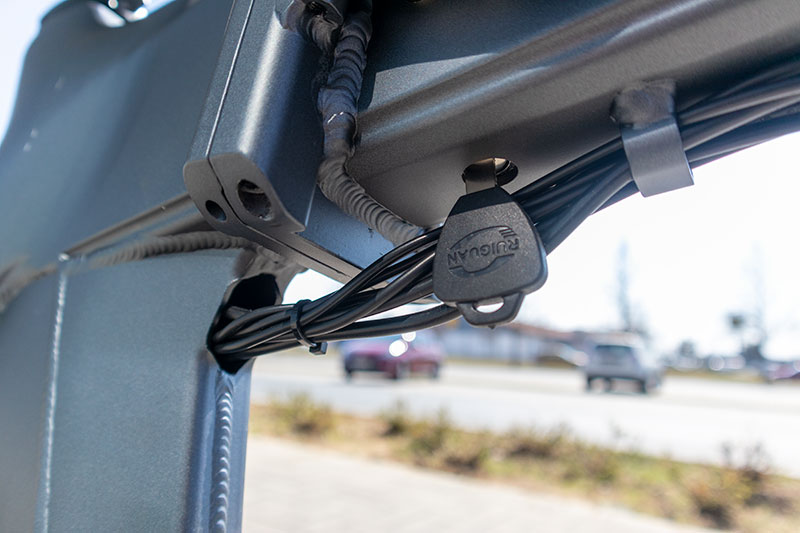
I also mentioned above that there is no computer, so we don’t get a lot of setup options. Assistance, like all similar bikes, has a pedal sensor here. This means that if you start turning the pedal, the electric motor will start with a slight delay, while if you stop turning, the assist will stop with a slight delay.
Although the paper format says the engine is only 250 watts, it doesn’t feel like much at all. There is definitely enough torque, it accelerates my “tiny” mass to a speed of 25 kilometers in a matter of seconds, but that’s where the fireworks end.
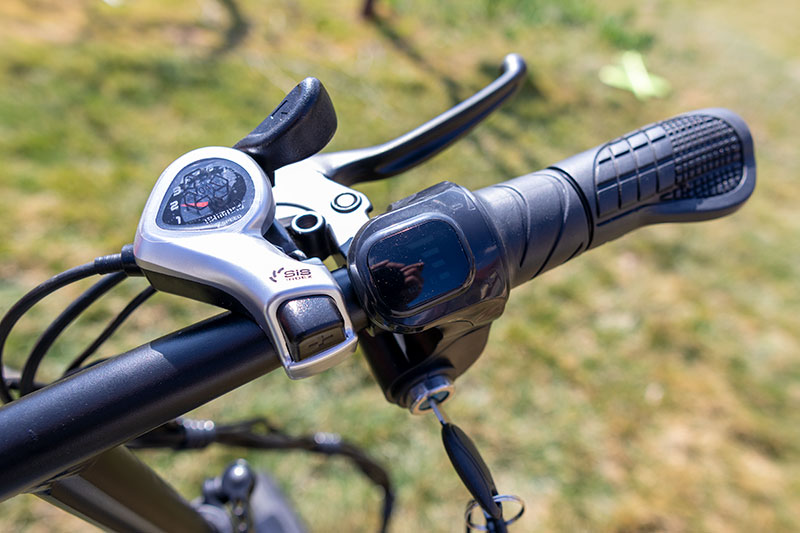
I note this is not a problem at all, in a city, on a bike ride, 25 kilometers per hour is plenty of speed, safe, we don't steal other road users.
The torque is sufficient at the ascent as well, although, as usual, we now need to put muscle force into the system to get up to normal speeds on inclines above average.
I note here that the C20 offers three modes for progress as usual. It can be used as a simple bike without assistance (in which case it is good not to smash the rubber, we can easily turn the pedal), it can be used with pedal sensor assistance, or even in fully electric mode, which can be activated by turning the inner half of the right-hand grip.
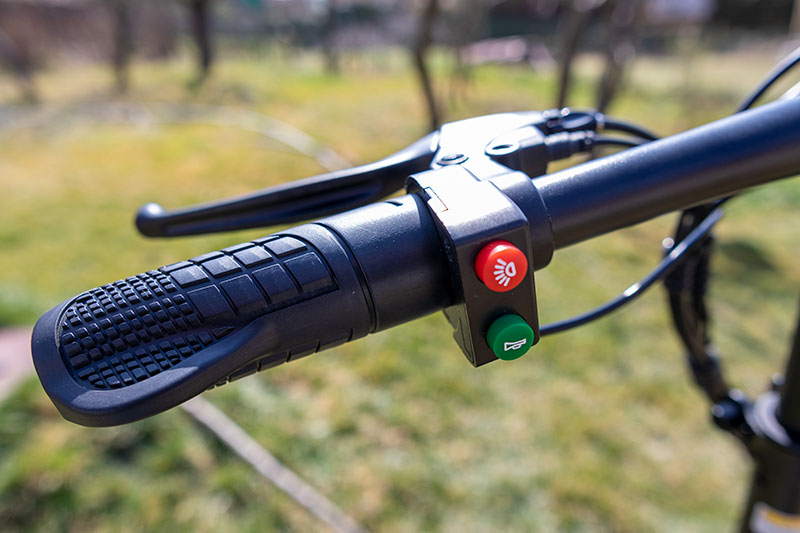
Honestly, I tried the latter method but didn't use it much. Pedaling is only possible with a smooth, light cardio workout without any effort. So let’s not be so lazy anymore that we won’t turn the pedal, we won’t break, but at least we’ll keep the appearance. 😉
Comfort is also important. For the ENGWE C20, the seat and front damping are what make it more comfortable to use. I can't have a bad word about the former. Comfortable, soft, large, I could go out of the world with it. The shock absorber, on the other hand, is a little softer than my taste desires. On worse asphalt it is more good, on a good quality road it is a bit bad, as in the latter case no special damping is required.
Summary
The ENGWE C20 is a special bike in terms of some of its capabilities, but it is also average in a lot of ways. However, the few things that are worth highlighting are worth it to take a closer look.
Right here is the special frame that not only looks good but is also light and strong. The maximum load capacity of 150 kilos is not usual in this price category, to be honest, we can be happy with 120 kilos if we get it.
Then here is the fast charge, which is not a very common phenomenon again. The maximum charging time of 6 hours means that if you go to work with a bike, you will be able to fully charge it during working hours. Of course, if you have 4 hours of work, you don’t.
The striking frame, the heavy load capacity is not enough yet, here is the range of 80 kilometers available in pedal mode. It is always appropriate to treat this data with caution, this is not usually calculated for those who weigh more than 100 kilograms. What is certain, however, is that the ENGWE C20 seems to be the best for the bikes I have had so far.
These are serious arguments in the plus line. As a negative, I can only cite the lack of a computer, but simpler, similar solutions are available cheaply in Chinese stores, so this flaw can be remedied.
I really like the C20 to be a deliberate city bike, but if one feels like it, it can also be aimed at a lighter bike obstacle course, or even a not-too-neglected forest road.
So, it’s basically invented for urban transportation, but we’re not crammed on the asphalt.
It can be a really pleasant means of transport, it can even be used to go to work on its own, but if you live in an agglomeration, you will still love it because you can easily put it on the suburban train or put it in the trunk of your car.
Whichever way you use it, one thing is for sure. Your fuel bill will drop drastically compared to what you’ve become accustomed to so far, and by the way, you won’t have to bother with public transportation anymore.
The price at the end of the article. The ENGWE C20 is available in gray (silver?) Or black, priced at NNNC20RE01 with a coupon code now HUF 259 thousand. This also includes the cost of transport, which takes place from an EU warehouse, so we will receive it in about 3 working days, and we do not have to pay extra customs duties and VAT.
If you liked it, you can find it here:










